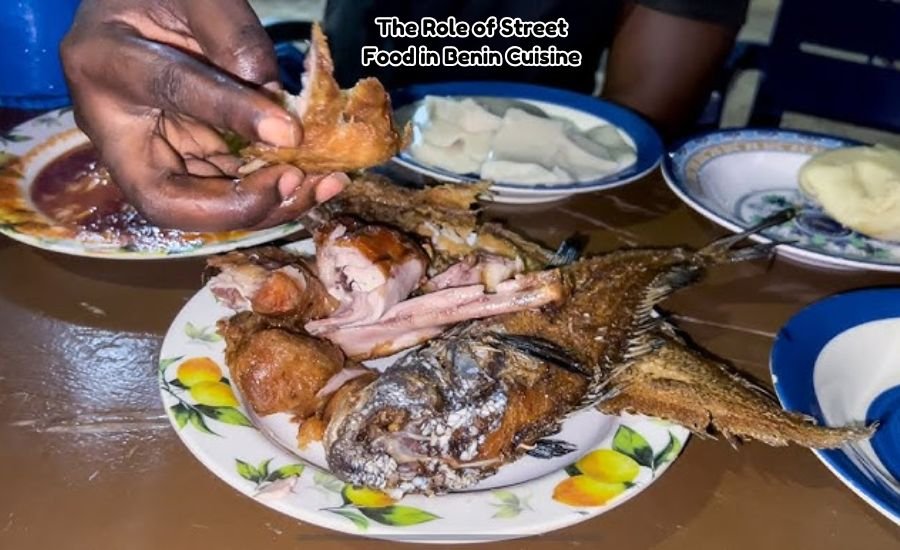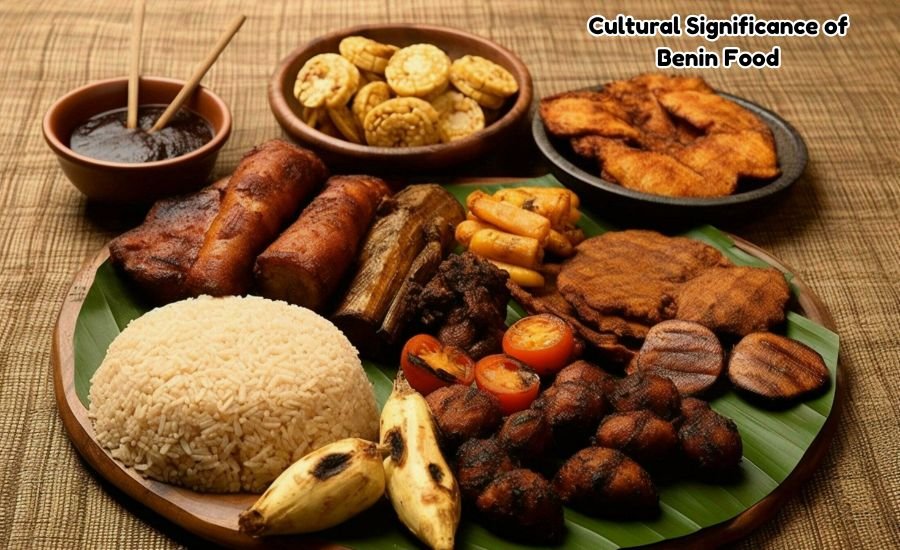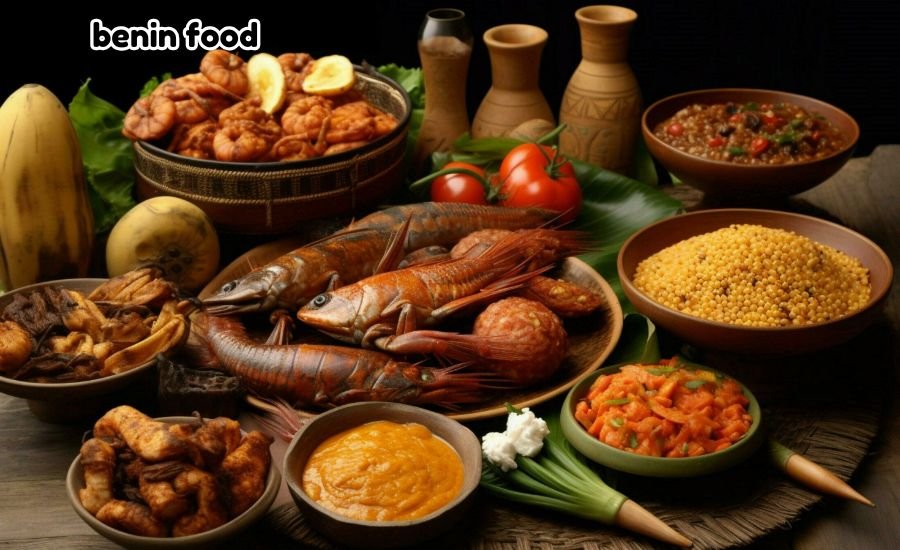Benin is a small, but active country located on the continent of West Africa, is known for its variety and delicious food. The food of Benin showcases its richness in the culture, and also its historic influence and the abundance of food resources. The flavors of this region are distinct, mixing traditional ingredients with unique preparation methods that make food delightful and intoxicating. Each dish is a story that tells the story of the nation’s past as well as their imaginations of people. The vivacious tastes and textures of Benin food are a stunning culinary experience worth savoring.
Benin eating isn’t only about nutrition, but rather an experience that brings people closer. It takes you through centuries of innovation and tradition, and highlights the distinctiveness about benin food diverse landscapes as well as different populations. If you’re eating street food or savoring the food that’s festive, the cuisine is an amazing look into the essence of Beninese living.
Traditional Dishes That Define Benin Food
benin food traditional dishes form the basis of the food tradition. They are easy to prepare, but are full of flavor and highlight the staple ingredients that are found in the region, including cassava, maize, rice and even yam. They are usually accompanied by strong spices and inventive methods of cooking that highlight the finest of indigenous ingredients.
- Amiwo is a sweet tomato-based dish is very popular in a variety of households. Made from maize flour, it’s cooked with onions, tomatoes and chili, resulting in a perfect balance of hot as well as the comfort of home. Amiwo is usually served with fried or barbecued chicken, or fish. It’s a satisfying and tasty meal that is suitable for families.
- Fufu It is a starchy food that is usually served with soups and stews. It is made by crushing yam or cassava and consumed using hands. It’s a popular and shared way for eating. The texture of fufu, along with the smokey flavors of the soup that it’s served with makes it a popular choice in Beninese family members.
- Egusi Soup This soup is made from ground seeds of melon. It is a unique classic, which is delicious with fufu or crushed Yam. The rich and nutty flavor is accompanied by the green leafy vegetables and proteins like salmon or goat. The process of making Egusi soup is an art as it requires careful preparation and seasoned to achieve its distinctive taste.
The wide variety of foods highlights the importance of local products and techniques are in benin food culinary tradition. They showcase the inventiveness and creativity that the Beninians who came up with these recipes over the years.
The Role of Street Food in Benin Cuisine

Street foods and other street food in Benin is an essential part of the daily routine. It is an expression of the creativity of local food stall proprietors, who transform simple ingredients into tasty food items and snacks. Street food isn’t just about convenience; it’s a way to bring people, and showcases the distinct flavor of Benin in every bite.
- Acaraje The deep-fried, black-eyed-pea-fritters have become a extremely loved street-food. They’re crisp on the outside and fluffy inside, they’re usually served with sweetness sauce. Acaraje is generally sold at stalls on the streets and markets and is an ideal and tasty option for both locals and visitors alike.
- Kuli-Kuli is a snack made from crushed peanuts. This snack is perfect for snacking on quickly and offers the taste of a delicious explosion. Kuli-Kuli isn’t only delicious but is also a great source of protein making it a healthy choice for many.
- Grilled Fish Fish that has been caught fresh is seasoned then cooked until it is perfect. typically, it is served with sweet plantains along with condiments. The result is testament to the freshness of seafood and the skill to cook it in a simple, yet tasty manner.
Street food isn’t just a way of satisfying the appetites of hungry individuals and provides an opportunity to see the daily life and social events of Benin. The vibrant markets and food market are bustling with activity, with people coming together to eat delicious food and get to know one another. From quick food items to a full-on meal street food markets in Benin is an essential part of the city’s culinary scene.
Ingredients That Shape Benin Food
The food culture of Benin is greatly influenced by the abundant supply of fresh, local produce. These ingredients aren’t just foods, but are integral to the everyday life and culture of the people living in Benin. Each ingredient plays an important role in defining the taste and textures of Beninese food products.
| Ingredient | Description | Usage in Dishes |
| Cassava | A starchy root vegetable | In Fufu, Gari and Chips |
| Maize | A staple grain | The foundation for porridge and amiwo |
| Peanuts | This region has an an agro-regionally different. | Sauces are created from an ingredient that is the primary one. snacks |
| Fish | There are coastal and freshwater versions of these available | Grilled, stewed or dried |
| Palm Oil | A bright, red shade of palm fruits | The richness of HTML0 is added into soups and stews. |
They’re not just abundant, but they’re also very versatile and allow for an array of food options. For instance cassava can be turned into many different foods such as crisp chips to peanuts and fufu. These are both used for both sweet as well as savory products. Utilizing local fresh and local ingredients, you can be sure that the Benin food items are delicious and nutritious.
Up next: Baked-red-snapper
Cultural Significance of Benin Food

Diet is a significant aspect of the culture in Benin is more than the desire to eat. it’s an expression of culture, tradition, and the uniqueness of the population. Food is frequently shared, which highlights the importance of family and community connections. Sharing meals is a way of establishing connections and enjoying every moment, no matter how tiny. Celebrations and celebrations often include elaborate meals which showcase the best of benin food food.
Traditional cooking methods, such as cooking with clay using open flames are still in use, maintaining the authentic taste. These techniques are not just a way to add a distinctive flavor to food items, but also showcase the imagination and creativity of the population. Benin food serves as a bridge between the past and present time, bringing generations together through exchanging recipes, and sharing cooking techniques.
Modern Influence on Traditional Benin Food
While traditional food remains the basis of benin food culinary nature, modern influences have also made an impression. Urbanization and globalization have introduced new cooking techniques and new ingredients. In urban regions, many restaurants combine traditional Benin food with modern trends and new recipes that are appealing to a wider population. The blending of modern and traditional is the main reason behind the rise of Beninese food, making it timeless and adaptable.
In addition young people are looking at traditional recipes and playing with their own variations, while keeping the essence of the food. This innovation will ensure the Benin food is flourishing and relevant in a constantly changing world.
Conclusion
Benin Food is a true expression of the country’s culture background and surroundings. Its diverse variety of foods with unique ingredients, as well as deep connection to the culture of the country Food in Benin is something that everyone will enjoy. It doesn’t matter what the basic flavor of a dish called fufu or the powerful taste of Egusi soup, or the warmth that is offered by street foods every bite tells an evocative tale of the traditional and new.
Exploring the culinary culture of Benin isn’t just about enjoying food, it’s about examining the heart of Benin as a country. It offers an insight into how lives of benin food citizens, as well as the values they value and the creativeness they put into their food. While the world continues to shift and evolve, the tastes that make up Benin provide a good example of the importance of preserving traditional food traditions while also embracing contemporary designs.
Continue your journey here: Exploring-the-rich-heritage-of-salvadoran-tamales
FAQs
Which are the primary ingredients for Benin foods?
Cassava as well as maize peanuts, as well as palm oil and fish are the principal ingredients utilized in traditional Benin meals.
The most loved food item from Benin food?
Amiwo, a spiced maize flour recipe that is spiced with tomatoes and chili, is a very popular dish among Beninese families.
What is the best way to eat the fufu Benin?
Fufu is generally consumed by hand and is typically served alongside soups or stews, emphasizing the importance of eating together.
What creates Beninese street foods so distinctive?
Beninese street-food like Acaraje and Kuli-Kuli, highlight the inventiveness the local food vendors and the captivating regional flavors.
Is Benin food spicy?
A lot of the meals originate from Benin cuisine are lightly spiced with ingredients like chili peppers to enhance the flavor.
What’s the function for palm oil within Benin the Benin food?
Palm oil gives a distinct flavor to stews, soups, and sauces. It is a key ingredient in a myriad of recipes.
Does traditional culinary techniques are still being used to cook in Benin?
Traditional techniques like cooking with clay pots and open flames are popular for keeping the original flavor.
